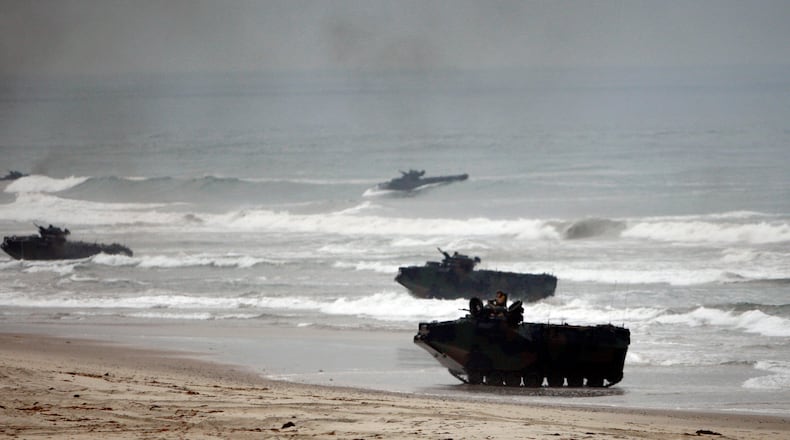Marine Col. Lynn Berendsen, who commands the Assault Amphibian School, noted the AAV had adopted several uses since the Corps first acquired it in 1972. AAVs had been used for their primary ship-to-shore mission, as armored personnel carriers in places such as Afghanistan and Iraq, as supply-movers in support of humanitarian operations, and even simply as boats.
“Its legacy is not only in its capabilities but also in the countless Marines who operated it and relied on it to accomplish their missions,” Berendsen said. “The AAV gave Marines both mobility and armored protection, allowing them to close with the enemy and seize objectives at speed. In the desert, just as in the Pacific beaches decades earlier, [the AAV] showed it was more than a connector — it was a fighting vehicle at the heart of the Marine Air Ground Task Force.”
The AAV replaced the Marines’ World War II-era Landing Vehicle-Tracked, which was the first Marine vehicle that could move troops from a ship to shore and into an inland fight. Over the decades, the AAV underwent several upgrades to improve its maneuverability, firepower and protection for Marines. But in 2018, service officials decided it needed to be replaced by a more modern vehicle.
Since then, the Marine Corps has been working to replace the AAV with the Amphibious Combat Vehicle, or ACV, which officials have billed as a faster, better armored amphibious vehicle that is also more suited to expeditionary and large-scale combat operations.
The ACV is an eight-wheeled, amphibious assault vehicle with a blast-resistant hull built by BAE Systems. The ACV can hold 16 Marines — including three crew members — and travel about 65 mph on a paved road and more than 6 knots on open water, according to BAE.
The Corps has said it intends to buy more than 600 ACVs for its assault amphibian battalions.
About the Author
